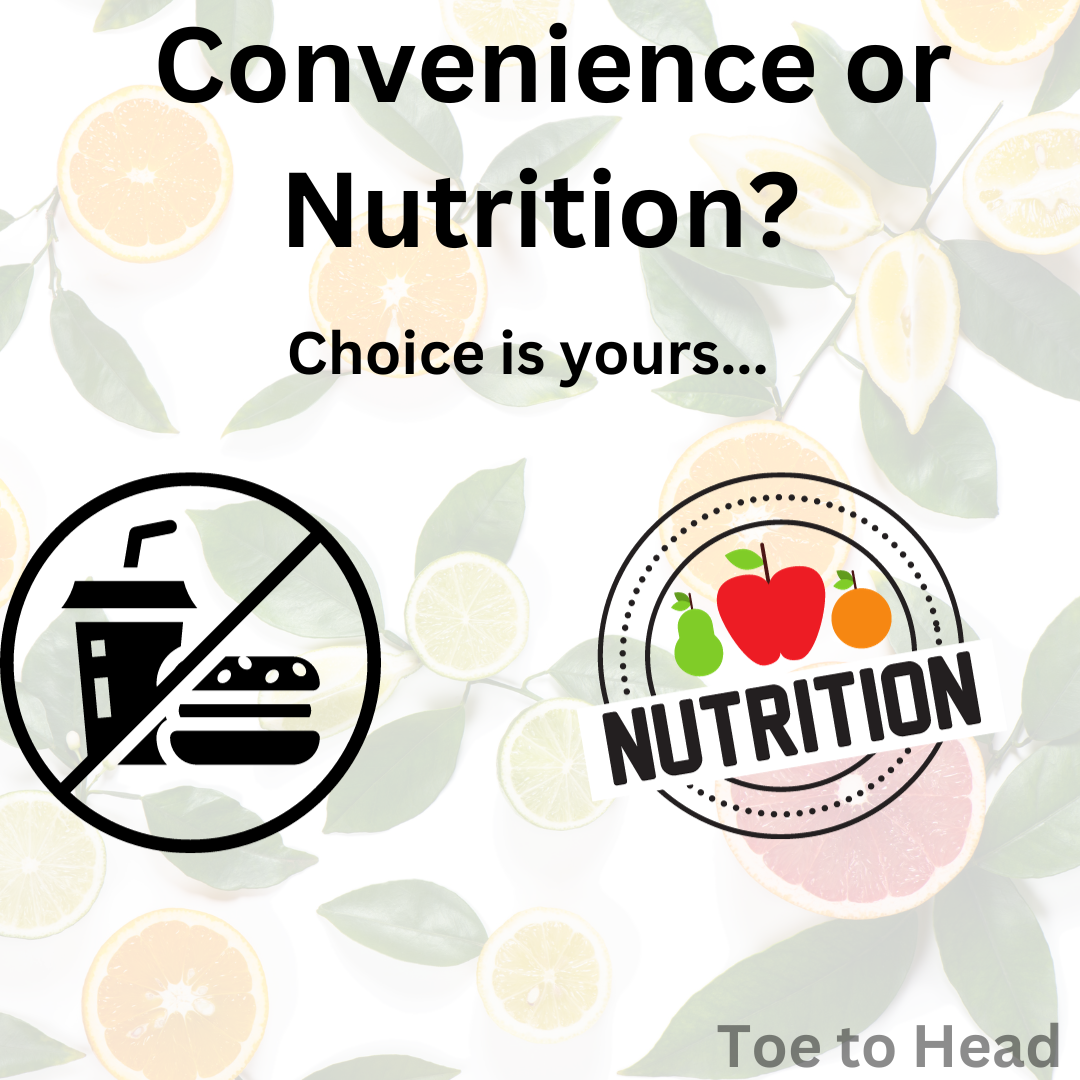We live in a fast-paced world where time is valuable, so the battle between ease and nutrition is often a big part of our daily lives. There are times when the desire for quick, easy meals is stronger than the desire for healthy, nutrient-dense foods. This clash of options brings up an important question: How can we find a balance between quick and easy options that are also healthy for our bodies?
The Convenience Conundrum

The Fast Food Temptation:
There are lots of fast food places on our streets that promise quick and tasty meals, but they are bad for your health. Even though burgers, fries, and drinks taste good, they don’t always give our bodies the nutrients they need. If you eat a lot of fast food, it can make you fat, give you heart disease, or give you diabetes because it is high in salt, saturated fats, and bad carbs.
Processed Foods on the Rise:
The problem of ease is shown by the fact that we eat more processed foods. Even though these foods are simple to make and eat, they often have a lot of extra ingredients, chemicals, and fake tastes added to them. These things can make our health worse in the long run and make our food less healthy.
The Nutritional Imperative

Fueling Our Bodies with Nutrient-Rich Choices:
Focusing on nutrients, on the other hand, means choosing foods that are best for our health in the long run. Whole foods, like fruits, veggies, lean proteins, and whole grains, give us the vitamins, minerals, and antioxidants we need to stay healthy. These options can give you more energy, help you think more clearly, and help you stay at a healthy weight.
Balancing Macronutrients:
Getting the right balance of macronutrients is just as important as the things we eat. A diet with the right amount of carbs, proteins, and fats can give you long-lasting energy, help your muscles grow, and keep your metabolism running smoothly. Finding this balance is very important for getting and staying healthy.
Navigating the Middle Ground

Smart Eating on the Go:
It is not only possible, but also necessary in our busy lives to find a balance between ease of use and nutrition. When you’re busy, smart eating means making choices based on what you know. We can make a big difference by choosing better fast food options, planning our meals ahead of time, and eating nutrient-dense snacks every day.
Mindful Choices for Long-Term Health:
Being mindful is a keyway to find a balance between ease and health. Knowing what nutrients are in the foods we eat and how they affect our health as a whole gives us the power to make smart choices. This kind of awareness goes beyond a single meal and includes how we eat in general.

What is convenience food and nutrition?
Foods that fall into the category of “convenience” are those that don’t need much, if any, additional work on the part of the consumer. They are made to be simple to operate and efficient in the kitchen. Instant noodles, frozen entrees, and ready-to-heat packages are some examples.
Nutrition is the process by which organisms sustain their growth, development, and health through the ingestion and utilization of food-based nutrients. Nutrition is the study of what goes into our food, what our bodies do with the nutrients we get from it, and everything in between.
Is it nutrition or nutritional?
Nutrition is the study of what foods contain and how those foods are utilized by the body.
Anything that has to do with nourishment can be described as “nutritional.” For example, you might refer to the nutritional content of a food item.
What are healthy convenience foods?
Healthy convenience foods are ones that provide a decent balance of necessary nutrients while yet meeting the convenience and speed requirements of convenience foods. Examples include pre-cut fruits and vegetables, yogurt, whole-grain crackers, and hummus.
What are the objectives of convenience food?
The goals of these foods are to:
Providing fast and simple lunch options for people with hectic schedules.
A product with a long shelf life can be used for a longer period of time before it begins to spoil.
Maintaining uniform flavor and quality with each use is what we mean by “consistency.”
Simplicity: requiring little in the way of time or expertise in the kitchen.
Pre-portioned meals are offered for the sake of convenience and wellness.
What do you mean by convenience goods?
Convenience goods are consumer products that are widely available and purchased often with minimal effort. Many of these items may be replaced with relative ease and for little money. Items such as toothpaste, soda, and chips are typical examples of consumables.
What is food and nutrition in home economics?
Home economics courses often include nutrition and cooking components to help students learn fundamentals in these areas. This includes recognizing the nutritional worth of different foods, meal budgeting, and creating balanced and health-conscious diets for individuals and families. Home economics teaches people how to cook, shop, and live more sustainably so they can make better decisions for themselves and their families.
Conclusion
In today’s fast-paced world, we always face a trade-off between time efficiency and healthful eating. It’s important to remember, though, that prioritizing one does not necessitate neglecting the other. We can guarantee that comfort and health coexist in peace by making informed decisions, learning about the nutritional content of our food, and finding a happy medium that suits our way of life. In the end, the choices we make today effect our long-term health, and finding that delicate balance is the path to a happier, more happy life.



